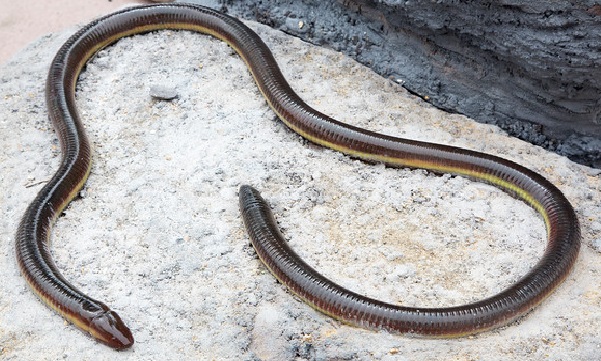Caecilian
Order Gymnophiona

Fascinating Facts
- They range in size by species from 3 inches to over 5 feet!
- Their name comes from the Latin “caecus,” which means blind.
- Some caecilian species are eyeless, others have small eyes hidden under their skin.
- They have short, sensory tentacles located between their eyes and nostrils that help them probe their environment and find prey.
- Young caecilians stay with their mother for several weeks after birth to feed off of her outer layer of skin that is rich in fat and other nutrients. This parental service is called “dermatotrophy.”
Habitat/Diet
Most are burrowers, living in a network of tunnels underground, but some species are aquatic. They have dozens of needle-like teeth to help them catch worms, insects, mollusks, snakes, frogs, lizards, and other caecilians. All food is swallowed whole.
Status in the Wild
Mexican, Pattipola, and Taylor’s caecilians – Vulnerable, IUCN
Changamwensis African, Sagalla, Taita African, Mahe, and Cooper’s Black caecilians – Endangered, IUCN
All others Least Concern or Data Deficient. Visit The IUCN Red List of Threatened Species for more information.
Range
Wet, tropical regions of Southeast Asia, India, Bangladesh, Sri Lanka, East and West Africa, the Seychelles Islands in the Indian Ocean, Central America, and in northern and eastern South America.
Location in the Zoo
Fish and Amphibians Zone of the Sculpture Learning Plaza
